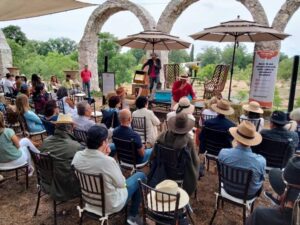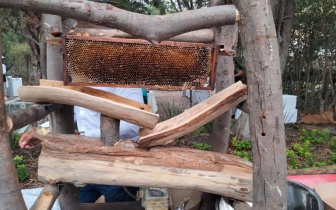The “Museo de Miel” in San Miguel de Allende celebrates its one year anniversary
News Category: News and Travel
-
The heritage city of San Miguel de Allende continues to surprise tourists with amazing places and what more than touring the ranch of Tierra y Amor where the honey museum is located, unique in this area, where you can learn part of the work of the place, as well as the process of life and care of the bees.
Within the framework of International Bee Day and Museum Day, the Honey Museum celebrates one year of existence, which was created by Luz Mercena Vera and her family, where she commented that they want to make it known through guided tours to schools or families who want to visit this space.

The museum is small, but it has an extraction room where they show you how they extract the honey from the honeycombs, in another room there is a costume of a beekeeper, and the explanation through images and text, as well as a video that explains everything about the life of the bees and everything they go through to get the pollen and make honey.

In the same place, they have a cabin of Apis Bees, it has a chair, where before entering you have to take off your shoes, rub your feet on the grass and then sit in the chair, take the wires hanging, and hold you there, you can close your eyes to start the meditation process, the device is through vibrations detects those bad things that you carry, which can produce some discomfort in the head or that area of the body where you have some damage, obviously it takes time and you have to do several sessions to be able to heal.
The top of the cabin has an orgone that is metal, combined with the honeycombs of the bees which helps you to heal through the vibration they generate.
Another part of the ranch has a beekeeping area where the local beekeepers take care of and collect honey and jelly in order to obtain the products they prepare on site, such as honey.
Among the activities carried out on this anniversary of the museum were two conferences, one with Omar Zamora who is a beekeeper, and the other with Arturo Islas, an environmentalist, who explained the importance of bees for the ecosystem and the work of beekeepers to avoid harming and damaging the bees.
Let’s remember that bees are part of the biodiversity we all depend on to survive since they provide high-quality food such as honey, royal jelly, and pollen.
Beekeeping is also an important source of income for many rural livelihoods. According to IPBES, the western honey bee is the most widespread pollinator worldwide, with more than 80 million hives producing some 1.6 million tons of honey per year.
-


Leave a Reply